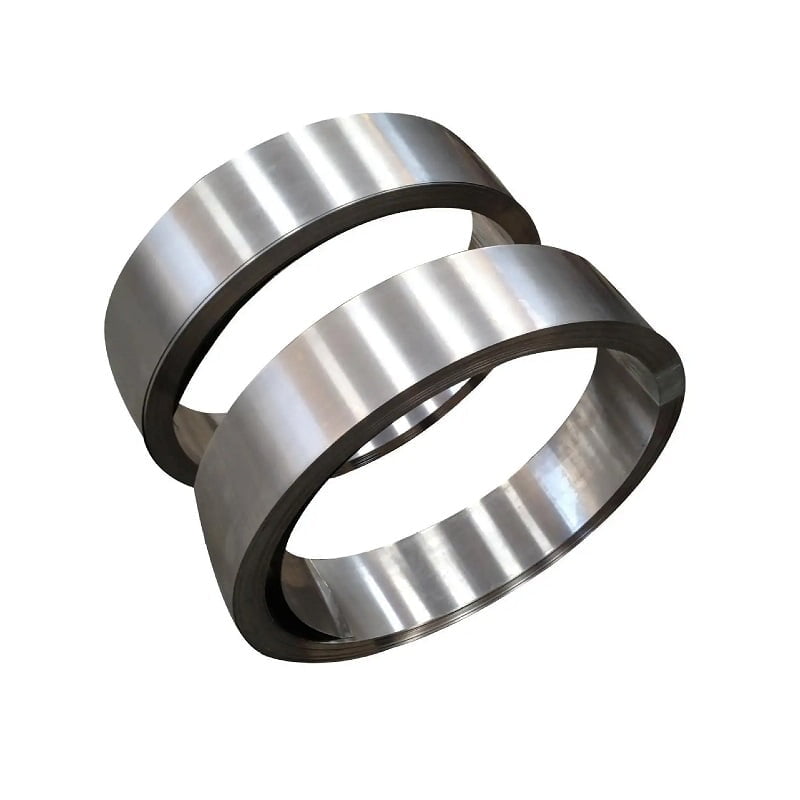
إن Nimonic و Distinel يحظى بتقدير كبير بشكل شائع في مختلف الصناعات لخصائص الأداء الاستثنائية. تشمل الجوانب الرئيسية لهذه السبائك:
- تكوين: يتكون كل من السبائك بشكل أساسي من النيكل ، لكنهما يختلفان في كميات الكروم ، الموليبدينوم ، وغيرها من العناصر ، مما يؤثر على أدائها.
- الخصائص الميكانيكية: إنها تظهر قوة عالية ومحونة جيدة ، لكن خصائصها المحددة تختلف ، مما يؤثر على مدى ملاءمتها للتطبيقات المختلفة.
- مقاومة التآكل والأكسدة: تتفوق كل من السبائك في مقاومة التآكل والأكسدة ، ولكن يُشار إلى Inconel بشكل خاص بسبب تعدد استخداماتها في البيئات العدوانية.
- التطبيقات: غالبًا ما يتم استخدام Nimonic في تطبيقات الفضاء ، بينما يجد Inconel استخدامًا واسعًا في المعالجة الكيميائية والبيئات البحرية.
- التصنيع وقابلية العمل: تختلف قابلية عمل هذه السبائك ، حيث يكون Inconel أسهل بشكل عام.
تكوين
| سبيكة | النيكل (ني) | الكروم (الكروم) | الحديد (الحديد) | الموليبدينوم (مو) | كوبالت (كو) | التيتانيوم (تي) | الألومنيوم (آل) |
|---|---|---|---|---|---|---|---|
| نيموني | 63-70 ٪ | 15-20 ٪ | بال. | 1-3 ٪ | 8-11 ٪ | 3-4 ٪ | 0.2-0.5 ٪ |
| Inconel | 58-72 ٪ | 14-22 ٪ | بال. | 2-10 ٪ | 3-8 ٪ | <1 ٪ | 0.2-1 ٪ |
الخصائص الميكانيكية
| ملكية | نيمونيك 80 أ | Inconel 625 |
|---|---|---|
| سمك 12-300 مم × عرض 200-2300 مم | 8.4 جم / سم مكعب | 8.44 جم/سم |
| قوة الشد (درجة حرارة الغرفة) | ~ 1000 ميجا باسكال | ~ 827 ميجا باسا |
| قوة الخضوع (درجة حرارة الغرفة) | ~ 800 ميجا باسكال | ~ 690 ميجا باسكال |
| نطاق درجة حرارة التشغيل | تصل إلى 1000 درجة مئوية | تصل إلى 1000 درجة مئوية |
| استطالة (عند الكسر) | 30% | 48 ٪ |
مقاومة التآكل والأكسدة
| سبيكة | وصف |
|---|---|
| نيموني | مقاومة الأكسدة الفائقة في درجات حرارة عالية ، مثالية لمكونات التوربينات في الفضاء. |
| Inconel | مقاومة تآكل ممتازة في مجموعة واسعة من البيئات التفاعلية ، مما يجعلها مناسبة لصناعات المعالجة الكيميائية العدوانية. |
التطبيقات
| صناعة | تطبيقات نيمونية | تطبيقات Inconel |
|---|---|---|
| الفضاء | شفرات التوربينات ، غرف الاحتراق | أنظمة العادم والمكونات الهيكلية |
| توليد الطاقة | توربينات الغاز ، والمبادلات الحرارية | أنابيب مولد البخار ، مكونات المفاعل النووي |
| النفط والغاز | أنابيب قاع البئر ، مكونات المصفاة | آلات إنتاج النفط والغاز وخطوط الأنابيب |
| المعالجة الكيميائية | المفاعلات ، المبادلات الحرارية | معدات المعالجة الكيميائية والصمامات والتجهيزات |
| التطبيقات البحرية | لا تستخدم عادة | منصات النفط البحرية ، التطبيقات البحرية |
التصنيع وقابلية العمل
| سبيكة | تقنيات التصنيع | قابلية العمل |
|---|---|---|
| نيموني | اللحام ، الآلات ، الصب | معتدل - يمكن أن يكون تحديا للآلة بسبب قوة عالية. |
| Inconel | اللحام ، الآلات ، تشكيل | جيد - يوفر خصائص لحام ممتازة ويمكن تشكيلها بسهولة. |
مزايا
| سبيكة | مزايا |
|---|---|
| نيموني | -قوة درجات حرارة عالية ممتازة |
| - مقاومة الأكسدة الفائقة | |
| -مصممة للتطبيقات عالية التوتر | |
| Inconel | - مقاومة تآكل ممتازة في البيئات التفاعلية |
| - خصائص ميكانيكية جيدة عبر نطاق درجة حرارة واسعة | |
| - تطبيقات متعددة الاستخدامات في مختلف الصناعات |
الاختلافات
| ميزة | نيموني | Inconel |
|---|---|---|
| التركيز الأساسي | تطبيقات درجات الحرارة العالية ، وخاصة في التوربينات الطيران والغاز. | مقاومة التآكل عبر مختلف الصناعات. |
| تباين التكوين | أعلى الكوبالت وتيتانيوم لتحسين قوة درجة الحرارة العالية. | مجموعة واسعة من الدرجات المصممة لتطبيقات مختلفة. |
| قابلية العمل | من الصعب على الماكينة بسبب ارتفاع القوة. | بشكل عام أسهل لتصنيع ولحام. |
يوفر هذا التحليل المقارن نظرة عامة واضحة على الفروق والتشابهات بين Nimonic و Inconel ، مما يساعد على تحديد أي سبيكة قد تكون أكثر ملاءمة للتطبيقات الهندسية المحددة.
